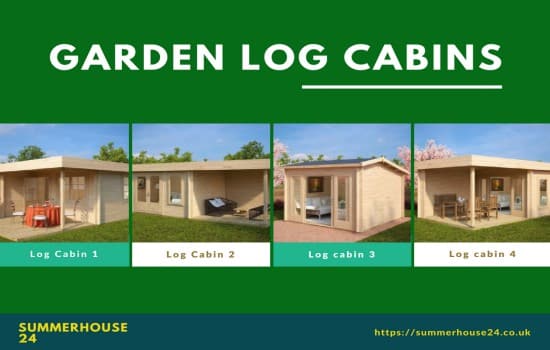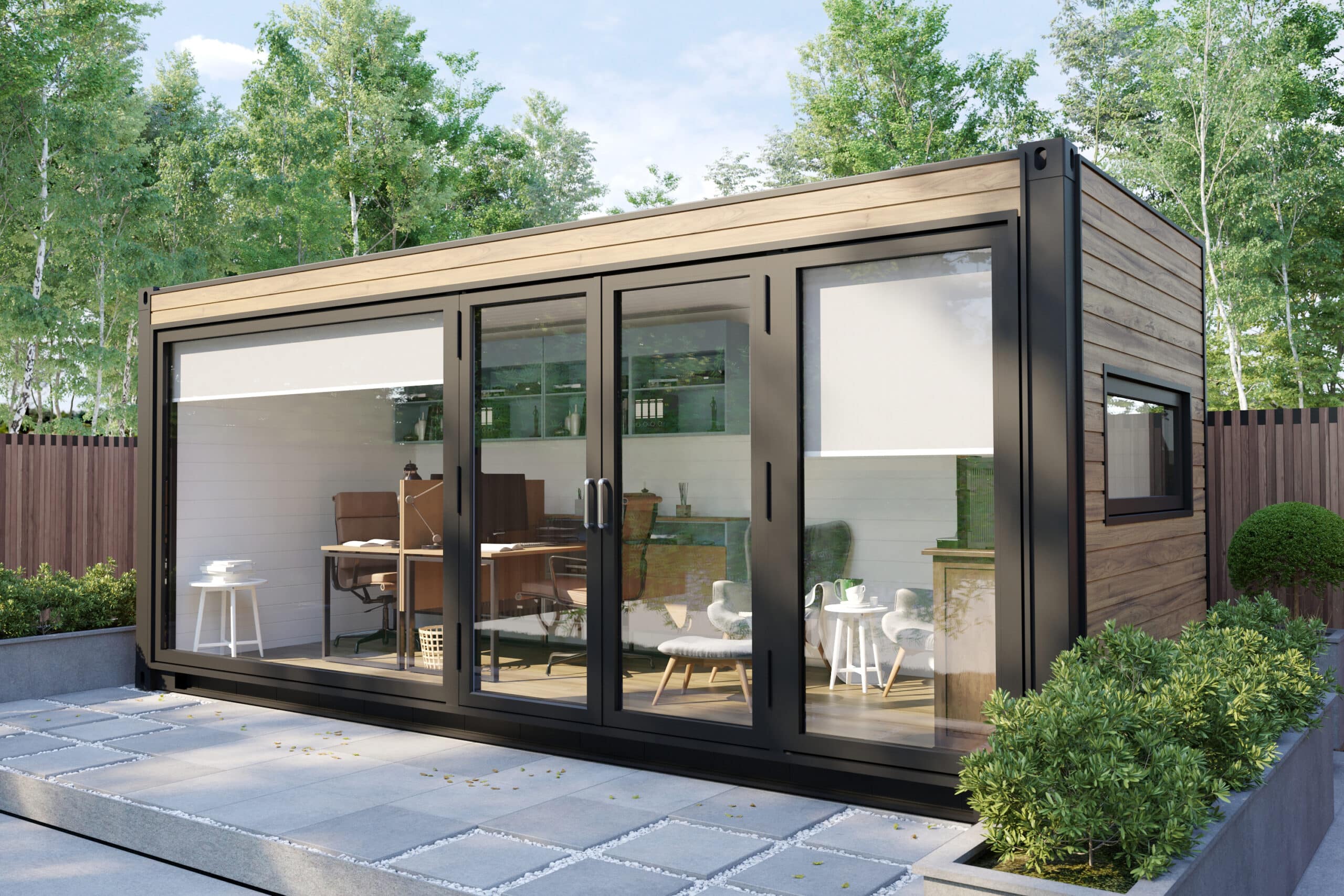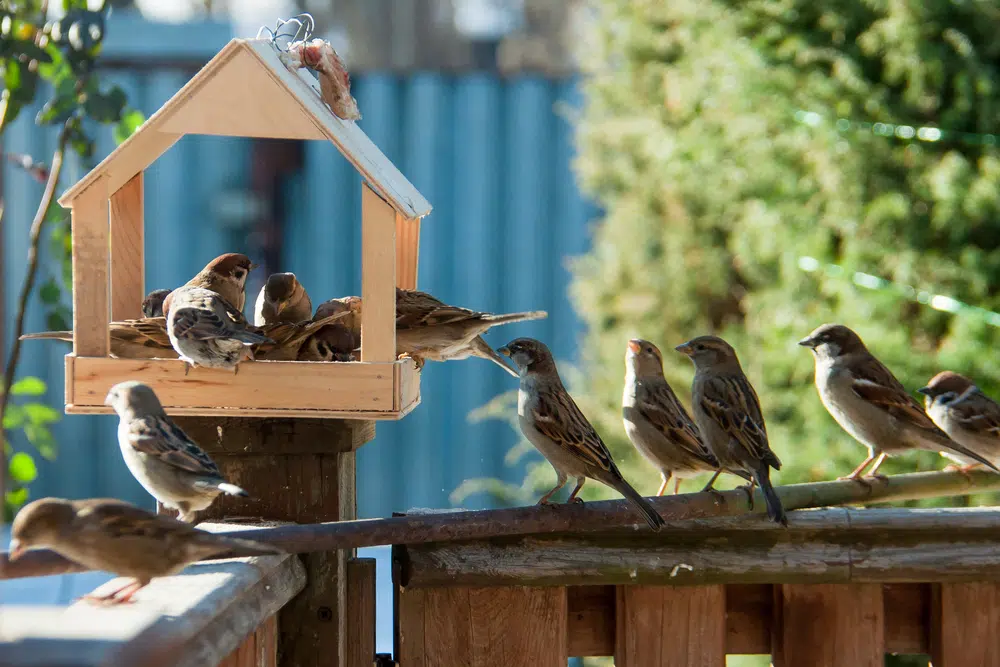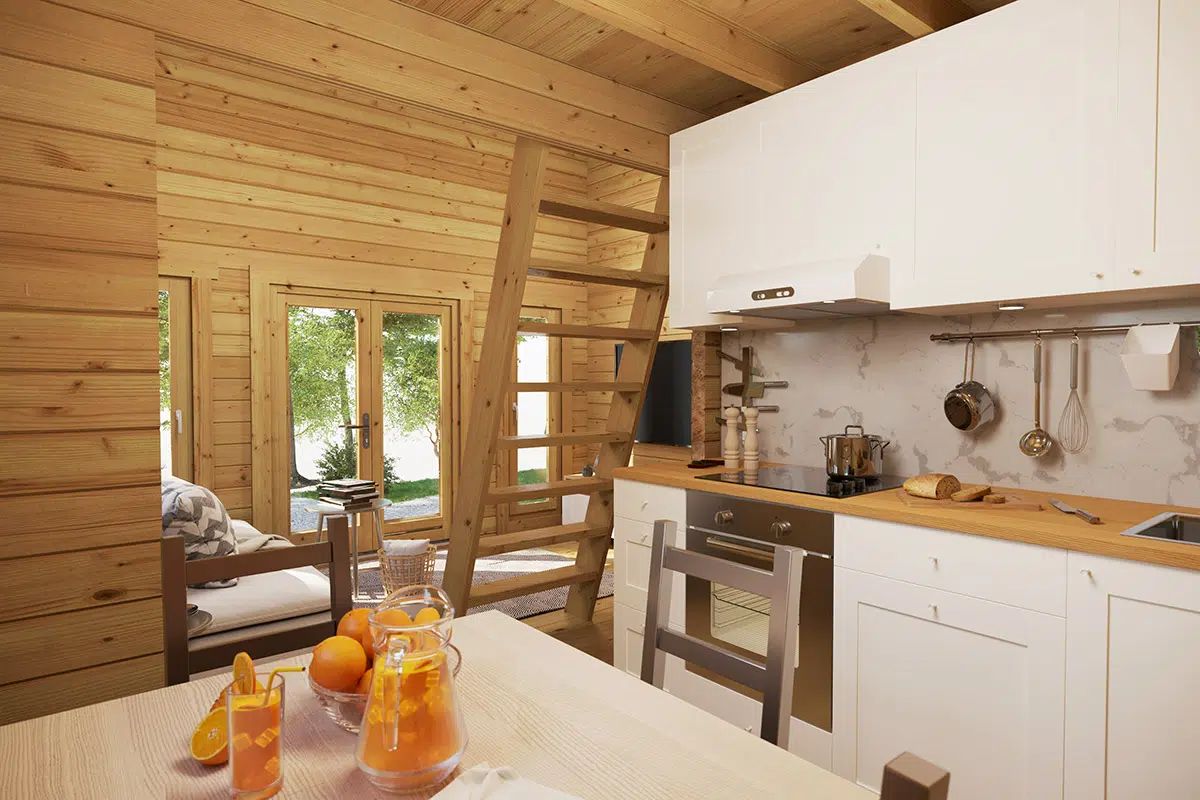Maintenance of Garden Log Cabins
22.06.2018
A garden log cabin is not only a very versatile and very useful garden building, it is also quite valuable and constitutes a considerable investment. Therefore, it is a sensible thing to inform yourself about how log home maintenance can prolong the life span and take preventing measures to avoid damages and keep costs and time requirement for repairs as low as possible.
Moreover, well-maintained garden log cabins always make a more favourable visual impression and just simply look better than neglected ones.
So let’s have a look at which areas you have to focus on in order to maintain your log cabin properly:
Key maintenance areas to look at:
- Foundation
- Drainage
- Protection from rain water
- Protection from moisture
- Wood treatment
- Security
Foundation
Even if some manufacturers of garden log cabins claim that it works, we would not recommend building a log cabin without proper foundations. A good base must not always be a plate covering the whole ground under the log cabin and it is also not always advisable to make the plate larger than the log cabin. To have it set back from the walls just a few centimetres will have rain water running down the walls drop besides the plate instead of onto it, keeping it dry at all times.
Now, building a foundation is not part of the maintenance, but there are some things to look after. If you still have the option to choose, please have a look at our manual of building different types of foundations for garden log cabins. Another quick, affordable, yet durable option especially on dry grounds is using adjustable pedestal risers under the foundation beams that will also lift the garden log cabin up from the ground and hold it stable.
If you are building one or if you have already built one: For maintenance of a garden log cabin, it is always most important to keep the ground under the log cabin or its foundation dry at all times which brings us to our second area:
Drainage of Garden Log Cabins
Like any wooden building, a log cabin will best be located on a hill or any elevated spot on your ground so that the surface water will run away from the cabin. If that is not possible, you might have at least the foundation elevated from the ground ten centimetres or more. In some locations, it might be necessary to dig drainage trenches to lead excess water through pipes to a lower area where it can run off.
A gutter will direct the water away from your garden log cabin. Make sure that neither the drainage nor the gutter can easily be clogged.
So it is part of the regular maintenance of garden log cabins to make sure that all parts of the drainage are working properly, the foundation is still elevated from the surrounding soil and water during heavy rains or melting of snow will never come close to the log cabin.
Protection from rain water
Of course the main thing to look out for here is the roof of the garden log cabin. The roof should be absolutely water-tight, or else it needs a repair.
We have mentioned gutters already. Rain water does not only reach the log cabin from above, but also from the surrounding soil when it falls off the roof and splashes back to the lower walls. This dirty water is especially damaging because the mud will also slow the drying of the walls down. So installing gutters and regularly checking them and removing dirt, moss, or leaves is also advisable.
The other way rain reaches your garden log cabin is from the side, when the wind blows the rain onto a wall. Oftentimes garden log cabins have weather sides where this happens frequently. Apart from choosing a log cabin with large roof overhangs this side will have to be subject to thorough investigation during each round of maintenance. You will read more about it in the part about wood treatments.
Protection of garden log cabins from moisture
Wooden garden log cabins will just live much longer if they stay dry. Dry wood can last for centuries.
Of course, water leaks and exposure will always cause moisture. So roof, gutters, treatment, drainage, dry and elevated foundations all prevent moisture. But in this area we need to talk about some other things, like:
- Usage
- Surroundings
- Insulation
- Heating
- Breathability
Garden log cabins that serve as residential log cabins will usually have people, maybe animals and plants living in them. All living beings give off moisture with their breath. Washing, cooking, cleaning, bathing will add to that. So you should not forget to open the windows wide from time to time, especially on dry days to exchange the moist air. The good news for inhabited log cabins is that they are mostly also already insulated and heated. Heated air can take up more water and by ventilating that air regularly out of the doors and windows, the inside will usually be dryer than a comparable non heated log cabin.
A wood treatment that does not eliminate the natural breathability of the wood, and an open insulation without airtight foils will keep the natural moisture regulating capacities of the timber intact.
Surroundings
It may look very romantic to hide garden log cabins deep in the trees and bushes, but a place in the deep shade will lead to water drying off more slowly than with a log cabin out in the open. In any case, you should remove branches that come too close and might touch the wall bending down when they are wet. Keep an area of about 20cm free all around the log cabin for ventilation.
Wood Treatment
Garden log cabins from Summerhouse24 are supplied kiln/-dried and mostly untreated. During kiln-drying the logs are slowly brought down to 18% core moisture which is an average value optimized for most climates. Thus, no settling is to be expected if you purchase your garden log cabin from us.
Foundation joists will be treated but for the rest of your log cabin, it is your choice of what treatment you will use.
Basically, there are three classes of treatments:
- Water-based treatments
- Spirit- or solvent based treatments
- Oil based treatments
The first two kinds of treatment will put layers of paint on the surface and often reduce breathability. Oil based treatments will usually soak into the wood and make it water repellent from the inside of the timber while still allowing the wood to breathe, and expand and shrink with the temperatures.
One excellent option for log cabin owners who have just received a new garden log cabin would be to treat the parts before assembly. This way, all the surfaces will be treated including those that are no more accessible after the construction is finished like for example the bottom sides of the floorboards.
Of course, no treatment at all would also be an option for example on walls that never get wet or all part just below the roof.
You can see if a treatment has to be renewed when you find moss, algae or lichen growing on the outer wall or when the wood absorbs water very quickly.
Security
Uninhabited garden log cabins sometimes are broken into while the owners are absent. So during your inspection and maintenance, you can always think about ideas if and how security around the garden log cabin could be improved.
One measure might be as easy as closing the curtains or blinds so nobody can look inside while you are not there.
One or more external lights could be operated by a motion detector. Modern alarm systems are very sophisticated and can trigger loud or silent alarms, activate cameras and set off phone calls to your mobile phone or the police. Window grilles can be decorative and enhance security at the same time.
Of course, our garden log cabins are by default delivered with double-glazed windows and doors with cylinder locks.
At Summerhouse24 we are committed to provide you with the best quality. So if you have any questions, please contact us or call Oliver at 020 3807 0369!
For More Information Watch this Video:
https://www.youtube.com/watch?v=kwTLlm3Gu7g&t=10s
Categories:
Useful TipsWant to discuss over phone. Let us call back to you
If you need any additional info regarding any product, please fill in the below form and we will get back to you, usually the same or next working day.
Have any questions regarding some product?
If you need any additional info regarding any product, please send us your questions.




